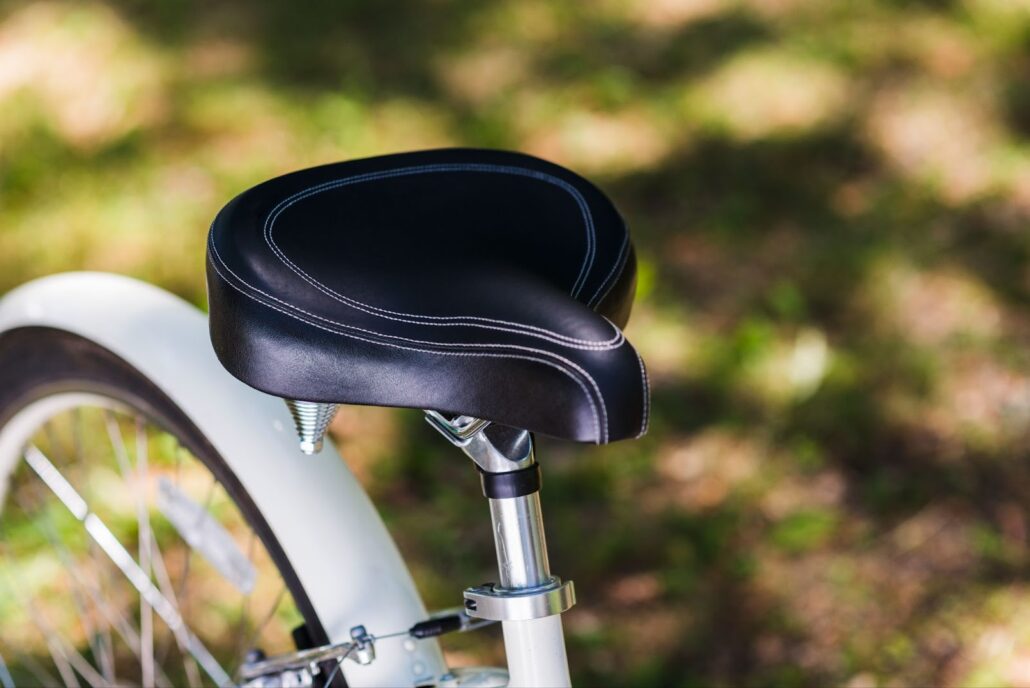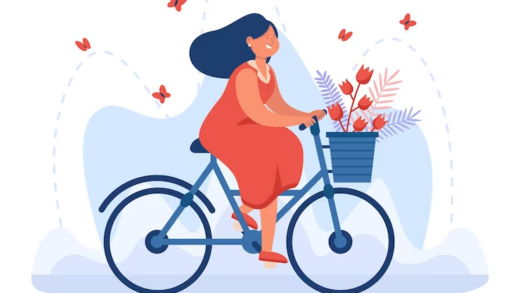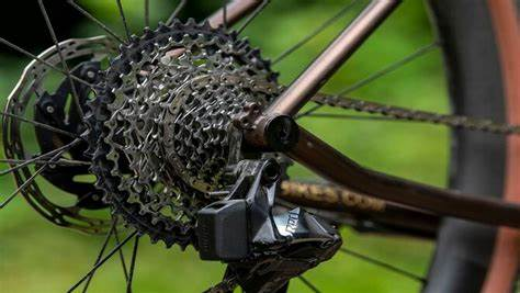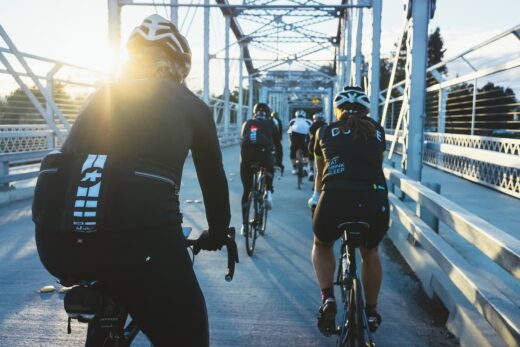Discovering the ideal adjustment for your seatpost’s positioning holds a paramount significance. After all, who desires to endure persistent muscle discomfort despite having acclimatized to cycling?
This is precisely where the concepts of setbacks and straight seatposts step into the scene. Each presents a distinct orientation for the cyclist, bearing a foundational distinction.
Consequently, a pondering might arise—betwixt setback and straight seatposts, which proves more fitting?
The setback seatpost extends an array of offsets to guarantee the rider’s utmost comfort. Through meticulous measurement of the setback seatpost, the offset emerges, tailored to the rider’s compatibility. Conversely, the straight seatpost embodies the concept of zero offset, situating the rider in a predominantly forward stance.
Seems intricate? A tad more elucidation could potentially lend assistance. Thus, let us embark on our exploration!
Variations in Bicycle Seatposts
| Aspect | Setback Seatpost | Straight Seatpost |
|---|---|---|
| Offsets | Numerous (ranging from 0 to 35) | Solely zero |
| Adjustability | Customizable | Fixed |
| Saddle Position | Adaptable, often leaning towards the rear | Forward-oriented |
| Options | Plentiful | Limited |
| Price | Higher-end | More affordable |
In-Depth Analysis: Setback Versus Straight Seatpost
Diving deep into the realm of bike seatposts, there are distinctions to understand between the setback and straight seatpost. This article sheds light on their intricacies, equipping readers with a better understanding to make an informed decision.
Rider’s Seating Position:
The primary distinction between the two lies in the seating alignment of the cyclist. The primary purpose of a setback seatpost isn’t necessarily to enhance the overall quality of the ride but to prioritize the rider’s comfort.
A setback seatpost facilitates a more rearward seating position on a bicycle, making the cyclist feel more relaxed, especially during longer rides. The pivotal factor in this design is the ‘seatpost offset’, a term referring to the various seating angles it offers. These angles span a spectrum, ranging from a straight 0 degrees to a tilted 35 degrees. By adjusting this angle, cyclists can achieve their preferred seating position.
Many experts believe that an optimal angle for many riders is around 25 degrees. Contrarily, a straight seatpost maintains a consistent 0-degree angle, which is why it’s often labeled as a ‘zero setback seatpost’.
Customizing the Seatpost to the Rider:
The decision on the perfect setback measurement isn’t arbitrary. Instead, it takes into account a rider’s physique, particularly the angle of the knee, from the hip bone to the ankle. This ensures that the rider’s legs move efficiently, maximizing power while minimizing discomfort.
A notable feature of many setback seatposts, such as the UPANBIKE Bike Seat Post, is the inclusion of an adjustable clamp. This allows riders to modify the seat’s position to best suit their body and riding style. This level of adaptability is one of the primary advantages of choosing a setback seatpost.
In contrast, a straight seatpost maintains a static orientation, moving only vertically. The versatility of the setback seatpost enables it to tilt, offering a broader range of motion to adjust to the rider’s comfort.
Comfort Considerations:
While comfort is highly subjective and varies among cyclists, a large number find the adjustable angles of a setback seatpost to be more accommodating. The flexibility to alter seating angles means riders can find a position that reduces strain and enhances their biking experience.
Saddle Positioning and Seatpost Choices: A Comprehensive Guide
Understanding Setback and Straight Seatposts:
Seatposts come in various designs, and one of the primary distinctions is between setback and straight seatposts.
Setback Seatposts: These are designed to position the saddle further back from the bicycle’s bottom bracket. Their design includes a slight curve or angle at the top, which shifts the saddle’s position backward. Ideal for leisurely or casual rides, setback seatposts can provide riders with a more relaxed seating position. This position can alleviate stress on the rider’s lower back and wrists, making it especially beneficial for longer rides.
Straight Seatposts: More vertical in design, straight seatposts align the saddle directly above the bottom bracket. This alignment provides a forward-leaning posture, which is optimal for aggressive cycling such as racing. It offers better power transfer and allows riders to maintain a more aerodynamic position.
Seatpost Selection for Mountain Biking:
Mountain biking often requires quick responsiveness and the ability to adapt to unpredictable terrains.
- Straight Seatposts: These are predominantly preferred in mountain biking due to their direct alignment. They offer better control and responsiveness, essential for challenging terrains;
- PNW Components Cascade Dropper Post: Recognized for its versatility, this particular post is tailored not only for mountain terrains but also offers various travel options, accommodating different rider preferences and trail demands;
- Setback Seatposts for Mountain Biking: While less common, some mountain bikers opt for setback seatposts when they require a more rearward position. This choice can be influenced by personal riding style, bike frame geometry, or specific trail conditions.
Adjusting Rider Position with Setback Variations:
Setback seatposts can be further classified based on the degree of setback they offer:
- Long Setback Seatposts: By providing a greater angle, these seatposts significantly increase the distance between the saddle and handlebars. They can be beneficial for riders with longer limbs or those who prefer a more stretched-out position;
- Short Setback Seatposts: These provide a minor shift in saddle position, ensuring only a slight increase in the saddle-handlebar distance. They can be advantageous for riders wanting a moderate change without a significant alteration in posture.
Enhancing Comfort with Premium Saddles:
Pairing a high-quality saddle with the right seatpost can amplify the riding experience. For instance, renowned Italian saddles, known for their craftsmanship and ergonomic designs, when combined with setback seatposts, can offer unparalleled comfort and performance.
Positioning with Straight Seatposts:
Due to their perpendicular alignment, straight seatposts position the saddle closer to the handlebars. This forward-leaning stance promotes an aggressive riding style, ideal for cyclists who prioritize speed and efficiency.
The Influence of Rider’s Body Structure:
The position of a bicycle’s seatpost is profoundly influenced by the rider’s physique. The ideal position varies from individual to individual, based on their body structure and comfort levels.
Setback Seatpost: Advantages and Suitability:
The preference for a setback seatpost arises from its convenience factor. But how does one decide on the perfect setback?
- Bike Fitting is Essential: Before any adjustment, it’s crucial to ensure the rider’s fit on the bicycle is optimal. The right sitting position can enhance the cycling experience, while an incorrect posture might result in discomfort or even bruising;
- Tailored Adjustments: The precise offset a rider needs can’t be generalized. Precise measurements are necessary. Interestingly, for those with a taller stature, a setback seatpost often seems to be a more comfortable option;
- Space Matters: A primary reason for this preference among taller individuals is the additional space it provides between the saddle and the handlebars. A constrained space can lead to a cramped, uncomfortable riding experience.
Straight Seatpost: Best For Whom?
- Ideal for Shorter Stature: Riders of shorter stature might find the straight seatpost more beneficial. Its design allows for easier reach to the handlebars due to the reduced distance. A feature that might be constrictive for taller riders can be advantageous for shorter ones;
- Significance of Femur Length: Those with shorter femur bones might find that bikes with zero setback are more ergonomic. Such a design promotes better saddle positioning, ensuring efficient pedaling;
- Considering the Bicycle’s Top Tube: Another essential factor is the bicycle’s top tube length. A straight seatpost is beneficial when the top tube is longer, as it balances out the distance between the saddle and the stem. However, always ensure the top tube length is harmonious with the rider’s physique for maximum comfort.
Final Verdict: Choosing Between Setback and Straight Seatposts
Determining whether to opt for a setback seatpost or a straight one necessitates a careful consideration of measurements. Seasoned cyclists and casual riders alike possess an understanding of which type of seatpost aligns optimally with their riding stance.

Yet, for those new to cycling, the foremost factor to weigh is the posture that elicits comfort. The initial inclination for most beginners leans towards setback seatposts, primarily due to their prevalence in contemporary bicycle designs.
Consequently, if you find yourself pondering the necessity of a setback seatpost, it’s premature to arrive at a conclusion. The ideal seatpost offset can be ascertained based on your unique physique. In this context, it’s reasonable to assert that setback seatposts see greater utilization.
Nonetheless, this does not signify that a straight seatpost is unsuitable for you. It’s always an option to embark on a trial to determine its compatibility with your posture. Should the fit prove overly inclined forward, there remains the possibility of reverting to a setback seatpost.
With that being said, I trust this has sufficiently addressed your inquiries.
Conclusion
Our comprehensive discussion on setback vs. straight seatposts concludes here. We trust that we’ve successfully satisfied your inquisitiveness regarding the more fitting option between the two.
Remember to conduct the setback measurement meticulously, as an incorrect assessment in this regard could yield more adverse consequences than initially perceived.
Wishing you a ride filled with utmost safety and enjoyment!






